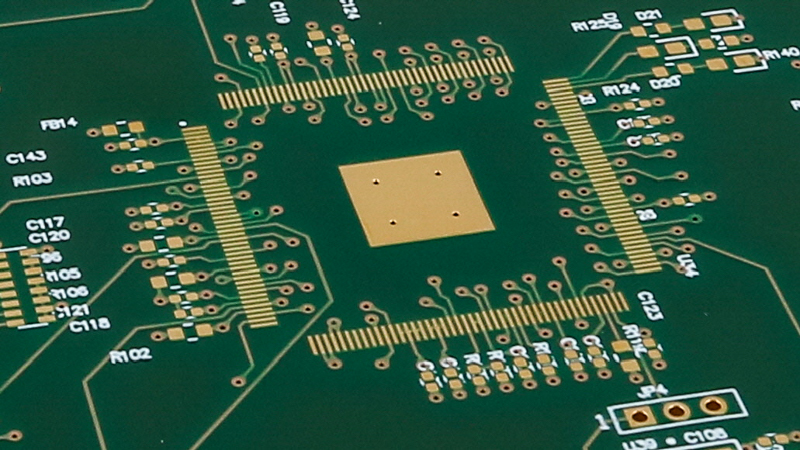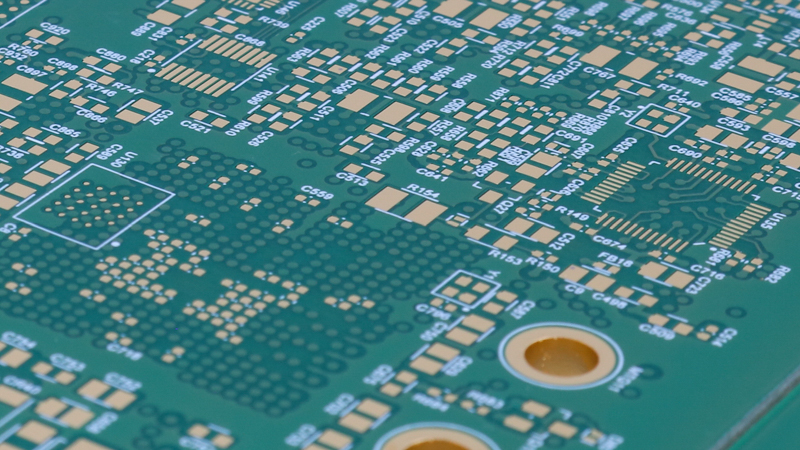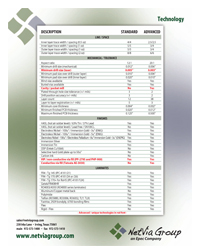Controlled Impedance HDI PCBs
Controlled impedance in high-density interconnect (HDI) printed circuit boards (PCBs) refers to the characteristic impedance of an electrical trace or transmission line in the PCB. The characteristic impedance is the ratio of the voltage to the current in an electrical transmission line, and it determines the electrical behavior of the trace.
In HDI PCBs, controlled impedance is critical for maintaining signal integrity in high-speed digital and RF circuits. It helps ensure that signals are transmitted with minimal waveform distortion and reflection, preserving signal quality, and reducing the chance of errors. The characteristic impedance is typically specified in ohms and is determined by the trace width, spacing, material properties, and layer stack-up of the PCB.


PCB Operation Benefits
Controlled impedance is important in HDI PCBs for several reasons:
- Signal Integrity: In high-speed electronic circuits, signals can be lost or distorted if the impedance of the trace is not controlled. This can result in reduced signal quality and increased errors. By controlling the impedance, the signal quality is improved, and the chances of errors are reduced.
- Signal Reflection: Impedance mismatch between the trace and the transmission line can cause signal reflection, which can cause waveform distortion and increased signal jitter. Controlled impedance minimizes the reflection and maintains the integrity of the signal waveform.
- EMI Reduction: Electromagnetic interference (EMI) can cause significant problems in high-speed electronic circuits. Controlled impedance helps reduce the EMI by minimizing the impedance mismatch and minimizing the amount of energy radiated from the trace.
- Power Delivery: In HDI circuit boards, power delivery is critical, and controlled impedance helps ensure that the power is delivered to the components without losses or degradation.
- Reliability: HDI PCBs are used in demanding applications where reliability is critical. Controlled impedance helps ensure that the signal and power integrity are maintained, which in turn helps improve the reliability of the circuit.
Impedance Control PCB Manufacturing
There are several challenges in manufacturing PCBs with controlled impedance:
- Design Complexity: Controlled impedance requires careful trace design, including the selection of trace width, spacing, and material properties. The design must also consider the manufacturing process, the layer stack-up, and the environment in which the PCB will be used.
- Manufacturing Tolerance: Controlled impedance is highly sensitive to manufacturing tolerance, and even small variations in trace width, spacing, or layer thickness can result in significant changes in impedance. This makes it challenging to achieve consistently controlled impedance across multiple boards.
- Layer Stack-Up: The layer stack-up is critical in determining the final impedance of the trace. The choice of materials, thicknesses, and the number of layers all have an impact on the final impedance. The layer stack-up must be carefully optimized to achieve the desired impedance.
- Material Properties: The properties of the materials used in the PCB, such as the dielectric constant, loss tangent, and conductor resistivity, all have an impact on the final impedance. The choice of materials must be carefully considered to ensure that the desired impedance can be achieved.
- Test and Verification: Verifying the impedance of the trace is a critical step in the manufacturing process. This requires specialized test equipment and techniques, and the test must be performed accurately to ensure that the final product meets the desired impedance specifications.
Differential Impedance
Differential impedance is a characteristic of a differential pair of signals in an HDI circuit board. It refers to the impedance of a pair of signals, typically two electrical signals that are transmitted in opposite phases on two separate conductors. The differential impedance is the difference in impedance between the two signals and is an important factor in determining the signal quality of the differential pair.
In HDI PCBs, differential impedance is critical for maintaining signal integrity in high-speed digital and RF circuits. Controlled differential impedance helps ensure that the differential pair signals are transmitted with minimal skew and crosstalk, preserving signal quality, and reducing the chance of errors. The differential impedance is typically specified in ohms and is measured as the difference in impedance between the two conductors in a differential pair.
To achieve controlled differential impedance, the trace width, spacing, and material properties of the differential pair must be carefully optimized. The layer stack-up and manufacturing process must also be considered to ensure that the desired differential impedance is achieved. Verifying the differential impedance of the trace is a critical step in the manufacturing process, and specialized test equipment and techniques are typically used to ensure that the final product meets the desired differential impedance specifications.
Challenges With Controlled Impedance in HDI Circuit Boards
The challenges in manufacturing PCBs with controlled impedance include design complexity, manufacturing tolerance, layer stack-up, material properties, and test and verification. As the features get smaller that need impedance control, it becomes more important that the PCB fabricator has invested in the proper equipment to ensure that the circuit board can be produced reliably. Specifically, laser direct imaging, laser drills, high-end etching equipment, AOI capacity, and the proper test equipment are critical and expensive for PCB manufacturers to have in operation.
Despite these challenges, controlled impedance is an important aspect of high-quality PCB manufacturing, and these challenges must be carefully managed to ensure that the final product meets the desired performance specifications. The Netvia Group facility has many years of experience with HDI-printed circuit boards.

